1864
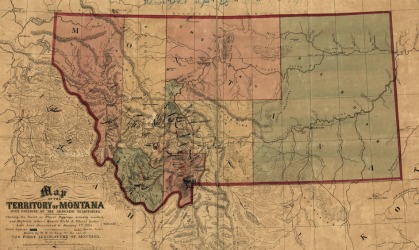
Congress created the Montana Territory out of what had been at various times a component of the Oregon, Washington, Nebraska, Dakota, and Idaho Territories.
1889
President Benjamin Harrison signed the formal proclamation admitting Montana as the 41st state in the Union.
1890

Republicans Wilbur F. Sanders and Thomas C. Power, both of Helena, took the oath of office as Montana's first United States senators following a hotly contested election in January. Because both houses of the Montana legislature were divided between Republicans and Democrats, two sets of senators-elect presented their credentials. On April 16, the Senate voted 32 to 26 to seat the Republicans.
1900

William A. Clark of Butte, a wealthy "Copper King" of Montana, resigned his Senate seat following an investigation of bribery charges that led to a unanimous report by the Committee on Privileges and Elections declaring Clark was not entitled to his seat. In January 1901, the state legislature again elected Clark, who this time was seated and served until 1907.
1909

Senator Thomas H. Carter of Helena became chairman of the Committee on Irrigation and Reclamation of Arid Lands, serving until 1911.
1912

Senator Joseph M. Dixon of Missoula was appointed national campaign chairman for the Progressive "Bull Moose" Party that nominated Theodore Roosevelt as its candidate for president.
1913

Senator Henry Lee Myers of Hamilton became chairman of the Committee on Irrigation and Reclamation of Arid Lands serving until 1915.
1913

Senator Thomas J. Walsh of Helena became chairman of the Committee on Mines and Mining, serving until 1919.
1915
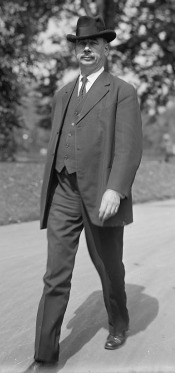
Senator Henry Lee Myers became chairman of the Committee on Public Lands (now the Committee on Energy and Natural Resources), serving until 1919.
1916
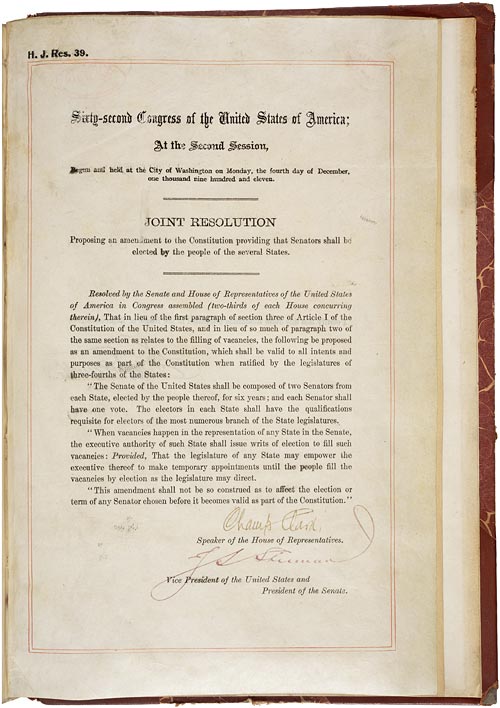
Incumbent senator Henry Lee Myers became Montana's first directly elected senator under the terms of the Seventeenth Amendment to the Constitution.
1918

Representative Jeannette Rankin of Missoula, the first woman to serve in Congress, campaigned unsuccessfully for a U.S. Senate seat.
1923
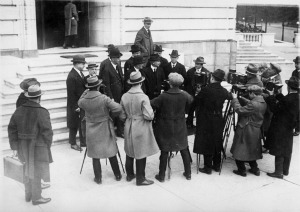
Senator Thomas J. Walsh opened the investigation into the Teapot Dome oil leases that led to the resignations of Attorney General Harry Daugherty and Interior Secretary Albert Fall. Six years later, Fall became the first former cabinet secretary to be convicted of bribery and corruption.
1924
At the request of Senator Burton K. Wheeler of Butte, the Senate passed a resolution appointing a special committee to investigate his indictment by a federal grand jury in Montana on charges of having been paid to represent clients in cases where the U.S. government was an interested party. Wheeler asserted that the indictment was an attempt to interfere with his investigation into former attorney general Harry Daugherty's failure to prosecute government officials implicated in the Teapot Dome oil-leasing scandal. The committee reported that it found the charges groundless and on May 23, 1924, the Senate voted 56 to 5 to exonerate Wheeler.
1924
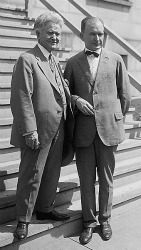
Senator Burton K. Wheeler accepted the nomination for vice president of the United States on the Progressive Party ticket headed by Wisconsin senator Robert M. La Follette; they lost in November to the Republican incumbent president Calvin Coolidge.
1925
The wealthy former senator William A. Clark died at his mansion in New York City, leaving his extensive collection of European art, including almost 200 paintings, sculptures, tapestries, rugs, antiquities, stained glass windows, and a Louis XVI-era salon, to the Corcoran Gallery in Washington.
1932
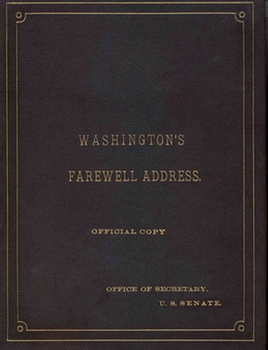
Senator Thomas J. Walsh delivered George Washington's Farewell Address on the floor of the Senate, a tradition dating to 1862.
1932
Senator Thomas J. Walsh was elected chairman of the Democratic National Convention in Chicago that nominated Franklin D. Roosevelt as its presidential candidate.
1933
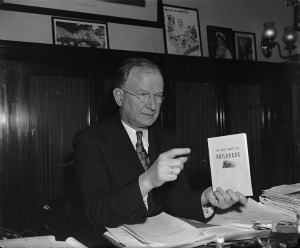
Senator Burton K. Wheeler became chairman of the Committee on Indian Affairs, serving until 1935. He then became chairman of the Committee on Interstate Commerce (now the Committee on Commerce, Science, and Transportation), serving until 1947.
1937
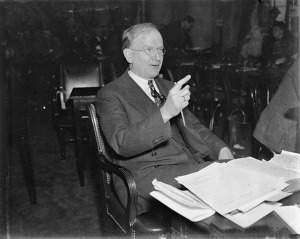
Senator Burton K. Wheeler led the opposition to President Franklin D. Roosevelt's proposal to expand (or "pack") the U.S. Supreme Court. Breaking with the New Deal, Wheeler then became an isolationist opponent of Roosevelt's foreign policies and a leader of the America First Committee.
1945

Senator James E. Murray of Butte became chairman of the Committee on Education and Labor (now the Committee on Health, Education, Labor, and Pensions), serving until 1947. In 1951 he became chairman of the Committee on Labor and Public Welfare, which also eventually became the Committee on Health, Education, Labor, and Pensions.
1955
Senator James E. Murray became chairman of the Committee on Interior and Insular Affairs (today's Committee on Energy and Natural Resources) where he served until his death in 1961.
1957

Senator Mike Mansfield of Missoula was elected Democratic whip, a position he held until 1961 when he became Democratic leader.
1959
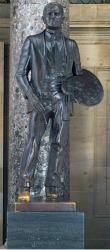
A bronze statue of the artist Charles Marion Russell, sculpted by John B. Weaver, was unveiled in the Capitol as Montana's first contribution to the National Statuary Hall Collection.
1961
Senator Mike Mansfield was elected the Democratic floor leader and Senate majority leader. He held that post for 16 years, always in the majority, until his retirement from the Senate in 1977 and held the record for longest-serving party leader until 2023, when Kentucky's Mitch McConnell surpassed him.
1961
Senator Mike Mansfield became chairman of the Committee on Rules and Administration, serving until 1963.
1964

To assist the elderly Senate President pro tempore, Carl Hayden during the long filibuster against the Civil Rights Act of 1964, Senator Lee Metcalf of Helena was elected permanent acting president pro tempore, a position he retained until his death in 1978, and which no other senator has held.
1966

Senator Lee Metcalf delivered George Washington's Farewell Address on the floor of the Senate, a tradition dating to 1862.
1976
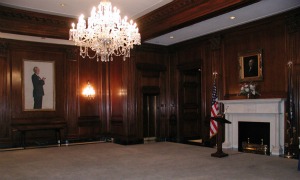
The general meeting room S-207 in the Capitol was named in honor of Senator Mike Mansfield.
1979

Senator John Melcher of Forsyth became chairman of the Select Committee on Indian Affairs, serving until 1981.
1979
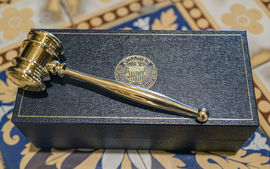
Senator Max Baucus of Missoula received the Golden Gavel Award for presiding over the Senate for 100 hours in a single session.
1985
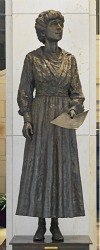
A bronze statue of Jeannette Rankin, by Terry Minmaugh, was presented by Montana as its second contribution to the Capitol's National Statuary Hall Collection.
1989
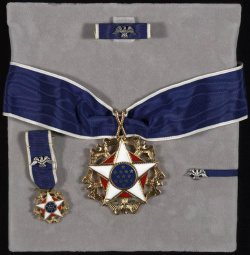
President Ronald Reagan awarded former senator Mike Mansfield the Presidential Medal of Freedom.
1991

Senator Conrad Burns of Billings delivered George Washington's Farewell Address on the floor of the Senate, a tradition dating to 1862.
1993

Senator Max Baucus became chairman of the Committee on Environment and Public Works, serving until 1995.
1998
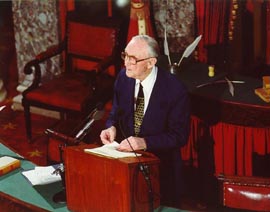
Former senator Mike Mansfield returned to the Capitol to deliver a "Leader's Lecture" in the Old Senate Chamber.
2001
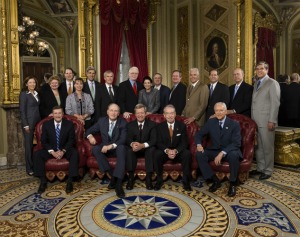
Senator Max Baucus became chairman of the Committee on Finance, serving until 2003 and again from 2007 until his resignation in February 2014.
2005
Senator Max Baucus became Montana's longest-serving senator, surpassing the record of 26 years, 1 month, and 26 days set by James Murray in 1961.
2007

Senator Jon Tester of Big Sandy received the Golden Gavel Award for presiding over the Senate for 100 hours in a single session. Senator Tester won a second Golden Gavel on September 27, 2008.
2014
Senator Jon Tester became chairman of the Senate Committee on Indian Affairs, a position he held until 2015.
2021
Senator Jon Tester became chairman of the Senate Committee on Veterans' Affairs, a position he held until January 3, 2025.